Alexandra Balahur
Improving Sentiment Analysis over non-English Tweets using Multilingual Transformers and Automatic Translation for Data-Augmentation
Oct 07, 2020
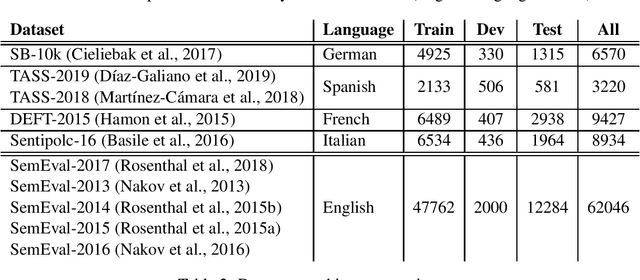
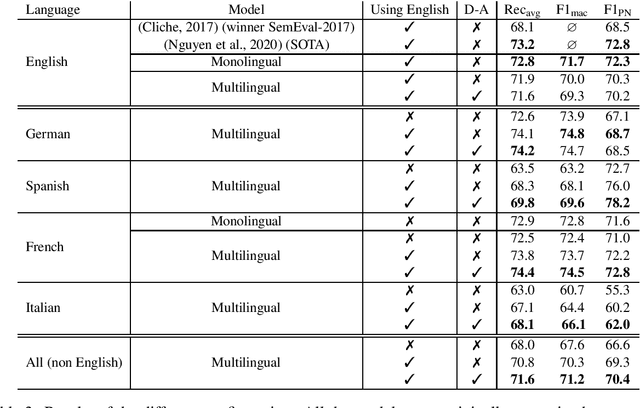
Abstract:Tweets are specific text data when compared to general text. Although sentiment analysis over tweets has become very popular in the last decade for English, it is still difficult to find huge annotated corpora for non-English languages. The recent rise of the transformer models in Natural Language Processing allows to achieve unparalleled performances in many tasks, but these models need a consequent quantity of text to adapt to the tweet domain. We propose the use of a multilingual transformer model, that we pre-train over English tweets and apply data-augmentation using automatic translation to adapt the model to non-English languages. Our experiments in French, Spanish, German and Italian suggest that the proposed technique is an efficient way to improve the results of the transformers over small corpora of tweets in a non-English language.
IEST: WASSA-2018 Implicit Emotions Shared Task
Sep 05, 2018
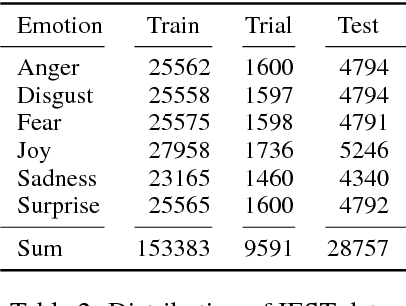
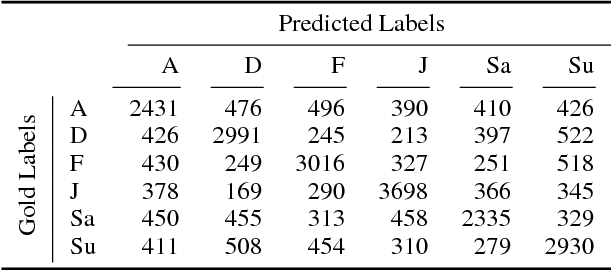
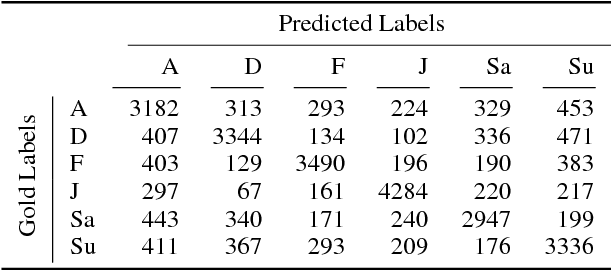
Abstract:Past shared tasks on emotions use data with both overt expressions of emotions (I am so happy to see you!) as well as subtle expressions where the emotions have to be inferred, for instance from event descriptions. Further, most datasets do not focus on the cause or the stimulus of the emotion. Here, for the first time, we propose a shared task where systems have to predict the emotions in a large automatically labeled dataset of tweets without access to words denoting emotions. Based on this intention, we call this the Implicit Emotion Shared Task (IEST) because the systems have to infer the emotion mostly from the context. Every tweet has an occurrence of an explicit emotion word that is masked. The tweets are collected in a manner such that they are likely to include a description of the cause of the emotion - the stimulus. Altogether, 30 teams submitted results which range from macro F1 scores of 21 % to 71 %. The baseline (MaxEnt bag of words and bigrams) obtains an F1 score of 60 % which was available to the participants during the development phase. A study with human annotators suggests that automatic methods outperform human predictions, possibly by honing into subtle textual clues not used by humans. Corpora, resources, and results are available at the shared task website at http://implicitemotions.wassa2018.com.
Observing Trends in Automated Multilingual Media Analysis
Mar 08, 2016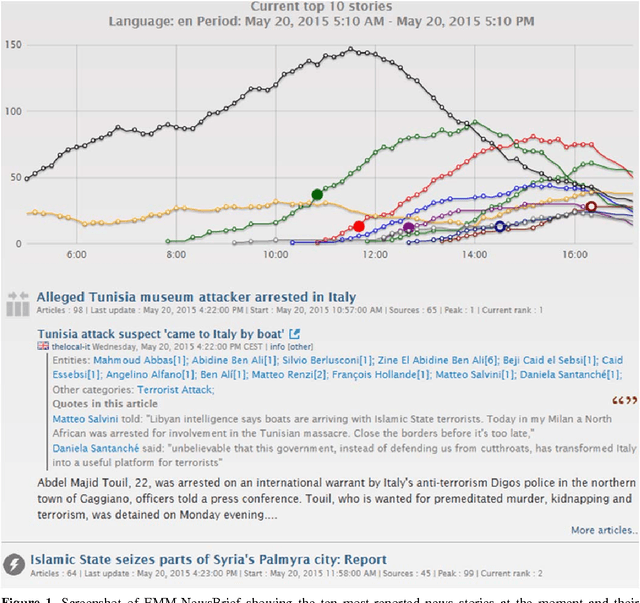
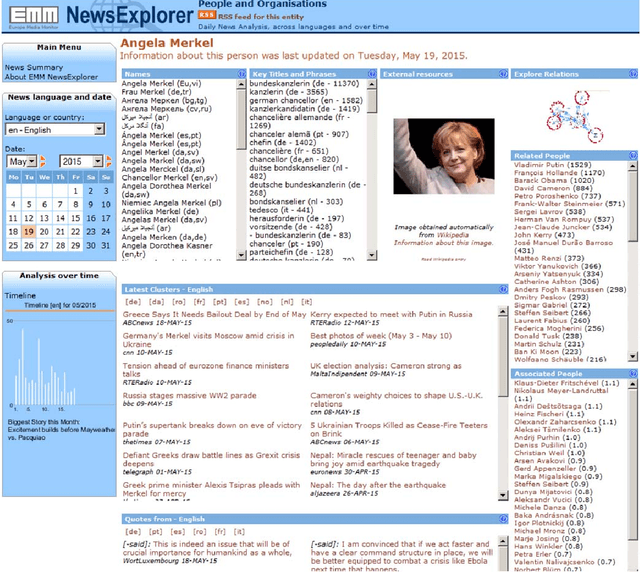

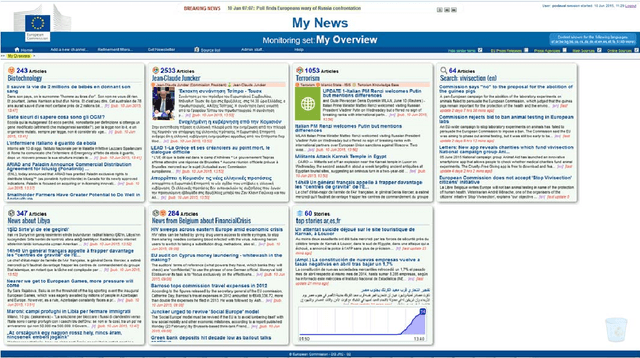
Abstract:Any large organisation, be it public or private, monitors the media for information to keep abreast of developments in their field of interest, and usually also to become aware of positive or negative opinions expressed towards them. At least for the written media, computer programs have become very efficient at helping the human analysts significantly in their monitoring task by gathering media reports, analysing them, detecting trends and - in some cases - even to issue early warnings or to make predictions of likely future developments. We present here trend recognition-related functionality of the Europe Media Monitor (EMM) system, which was developed by the European Commission's Joint Research Centre (JRC) for public administrations in the European Union (EU) and beyond. EMM performs large-scale media analysis in up to seventy languages and recognises various types of trends, some of them combining information from news articles written in different languages and from social media posts. EMM also lets users explore the huge amount of multilingual media data through interactive maps and graphs, allowing them to examine the data from various view points and according to multiple criteria. A lot of EMM's functionality is accessibly freely over the internet or via apps for hand-held devices.
Sentiment Analysis in the News
Sep 24, 2013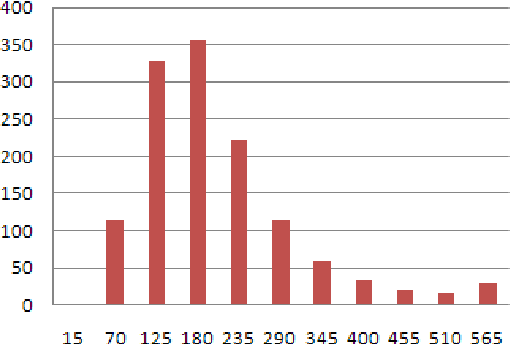

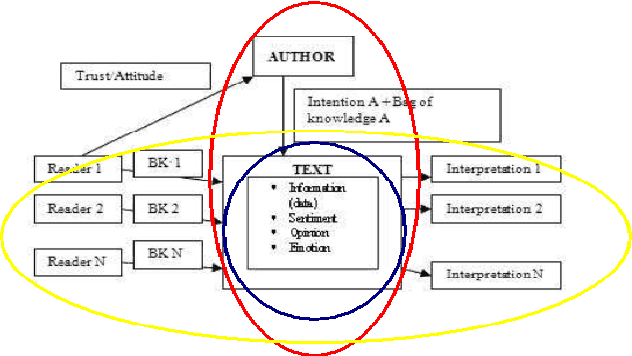
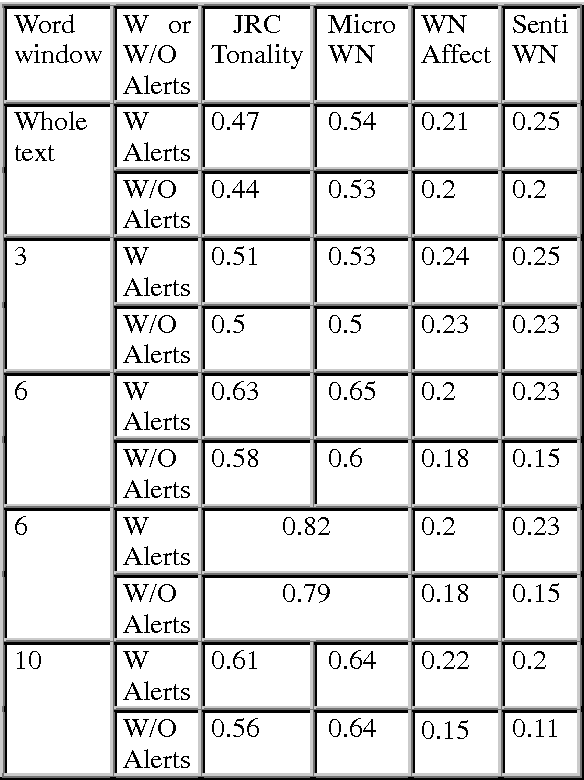
Abstract:Recent years have brought a significant growth in the volume of research in sentiment analysis, mostly on highly subjective text types (movie or product reviews). The main difference these texts have with news articles is that their target is clearly defined and unique across the text. Following different annotation efforts and the analysis of the issues encountered, we realised that news opinion mining is different from that of other text types. We identified three subtasks that need to be addressed: definition of the target; separation of the good and bad news content from the good and bad sentiment expressed on the target; and analysis of clearly marked opinion that is expressed explicitly, not needing interpretation or the use of world knowledge. Furthermore, we distinguish three different possible views on newspaper articles - author, reader and text, which have to be addressed differently at the time of analysing sentiment. Given these definitions, we present work on mining opinions about entities in English language news, in which (a) we test the relative suitability of various sentiment dictionaries and (b) we attempt to separate positive or negative opinion from good or bad news. In the experiments described here, we tested whether or not subject domain-defining vocabulary should be ignored. Results showed that this idea is more appropriate in the context of news opinion mining and that the approaches taking this into consideration produce a better performance.
 Add to Chrome
Add to Chrome Add to Firefox
Add to Firefox Add to Edge
Add to Edge